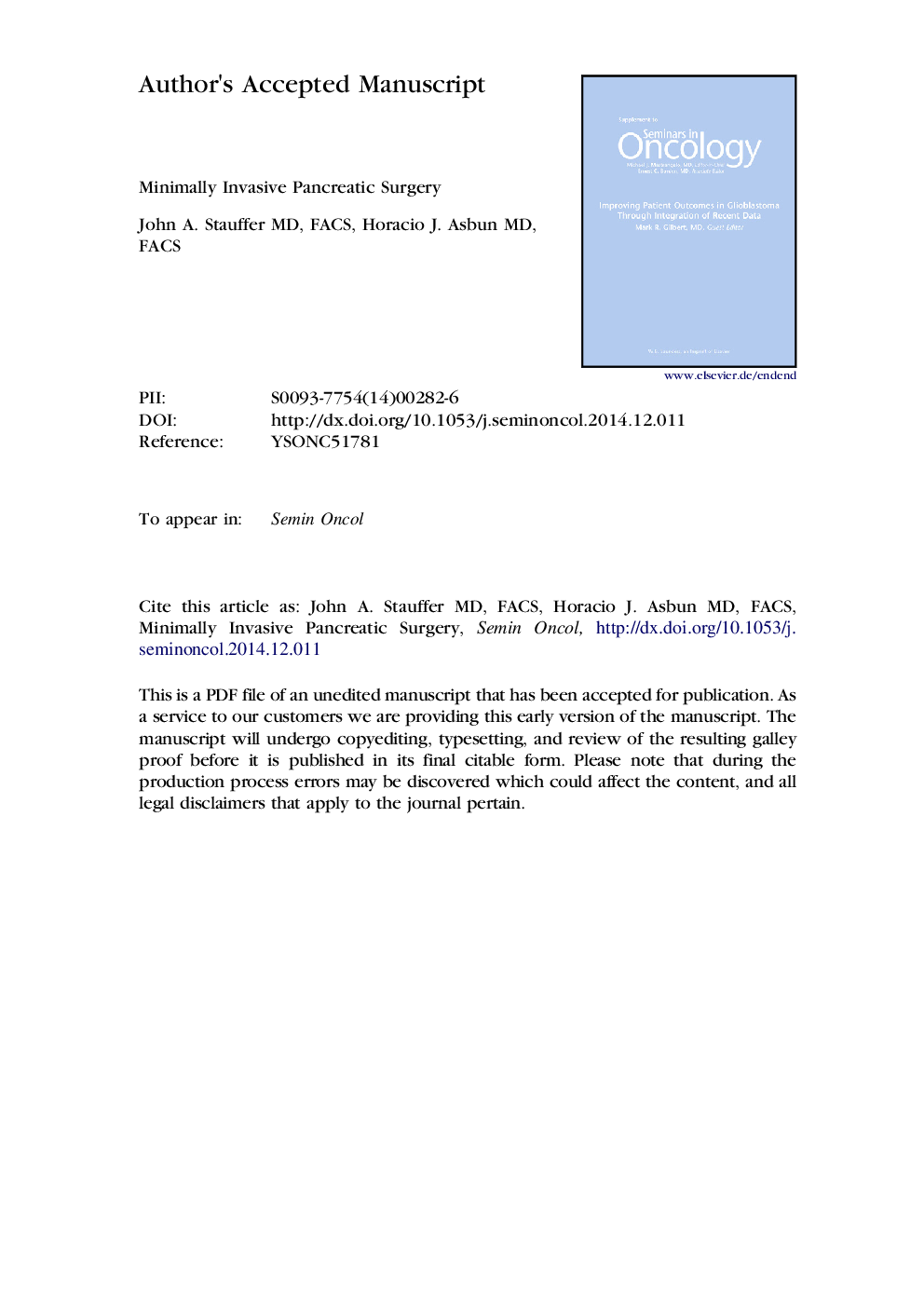| Article ID | Journal | Published Year | Pages | File Type |
|---|---|---|---|---|
| 2161863 | Seminars in Oncology | 2015 | 29 Pages |
Abstract
Pancreatic resection is a complex procedure that involves exposure of the retroperitoneal gland, dissection around major vascular structures, and management of an intricate organ, all of which results in a procedure associated with a high morbidity. The application of minimally invasive techniques to pancreatic resection have been studied only relatively recently. This analysis of the current concepts in minimally invasive pancreatic surgery focuses on a select look at currently published series or reviews from centers and groups that have the most experience with this procedure. We aim to present a comprehensive review gained from the experiences of those who are on the leading edge of the learning curve, with an emphasis on describing the similarities and differences between the minimally invasive and open pancreatic procedure. Minimally invasive distal pancreatectomy appears to be on the verge of widespread acceptance and shows clear benefits over its open counterpart. Minimally invasive proximal (right-sided) pancreatectomy, on the other hand, appears to be limited to select centers that have been able to demonstrate promising results despite its challenges. Additionally, minimally invasive central pancreatectomy and enucleation appear feasible as experience is gained in laparoscopic and robotic pancreatic resection.
Related Topics
Life Sciences
Biochemistry, Genetics and Molecular Biology
Cancer Research
Authors
John A. Stauffer, Horacio J. Asbun,
